International Journal of Scientific & Engineering Research, Volume 4, Issue 4, April‐2013 281
ISSN 2229‐5518
Geotechnical Behaviour of Fine Sand Mixed with Pond Ash and Lime
Shilpi Gupta1, Prateek Negi2, Ashok Gupta3
Abstract: The present work has been carried out to study the effect of lime and pond ash on geotechnical behaviour of fine sand. Fine sand found in deserts and near sea shores is not readily suitable for supporting buildings and roads, as it is loose and vulnerable to collapse upon wetting. Fine sand having high permeability and low shear strength is also not suitable for earthen dam construction. For the same reasons, fine sand is not suitable for constructing landfill liners and covers. The disposal of pond ash from power plants has been a major environmental concern over a period of last few decades. In presence of moisture, pond ash reacts with lime and forms cementitious compounds which can be used to increase the strength of weak soil.
A series of testing including scanning electron micrographs and x-ray diffraction has been performed to characterize the materials. Various proportions of mixes of fine sand with pond ash keeping lime constant were tested to find out the optimum percentage of pond ash.
Keywords: Fine Sand, Lime, Pond Ash, Scanning electron micrographs, X-ray diffractograms, Soil compaction, Shear strength, Triaxial test.
—————————— ——————————
1 INTRODUCTION
SAND is a natural granular material composed of finely divided rocks and mineral. The composition of sand varies according to the parent rock and the mode of transportation. Sand is transported by various agents like wind and water, and is deposited in the form of beaches, dunes, sand spits, sand bars etc.
On the basis of particle size, sand can be classified as following:
Fine sand = 0.075 to 0.425 mm
Medium sand = 0.425 to 2 mm
Coarse Sand = 2.0 to 4.75 mm
Fine sand obtained from sea shores is generally brown in color and angular in shape. It contains salts with it which attracts moisture from atmosphere. Such absorption causes dampness and disintegration of work in which it is used. Sea sand also retards setting action of cement. Due to these reasons, this kind of fine sand is generally avoided for engineering purposes. It is used only as a local material for nonstructural purposes.
Desert sand is also usually fine‐grained and poorly graded sand, which create major problems for

1 Post Graduate Student (Geotechnical Engineering,Civil Engg. Dept, DTU, New Delhi, India),PH‐ 08802483044. E-mail:gupta.shilpi33@gmail.com
2 Asst. Prof. (Civil Engg. Dept, Galgotias University, Greater Noida, Uttar
Pradesh, India), PH‐ 09953919464. E-mail: negidynamic@gmail.com
3 Professor & Head (Civil Engg. Dept, Delhi Technological University, New
Delhi, India), PH‐09313505567. E-mail: akumargupta@dce.ac.in
construction of infrastructures. Fine sand is also not suitable for dam construction because of its relatively high permeability and low shear strength. For the above reasons, fine sand is not suitable for construction of landfill liners and covers.
Pond ash is a waste product from thermal power industry. More than 150 million tones of pond ash is produced annually in India. The un‐utilized fly ash and bottom ash are taken to ash ponds for deposition. The ash deposited in the ash pond is known as pond ash.
Today around 20,000 hectares of land is occupied by ash ponds. It not used in some manner, pond ash will become an increasing burden on the environment. Now days it is not regarded as waste material.
In presence of moisture, pond ash chemically reacts with lime at ordinary temperature and forms a compound possessing cementitious properties. After reactions between lime and pond ash, calcium silicate hydrates are formed which are responsible for the high strength of the new formed compound. S. Bhuvaneshwari et al. [1].
2 LITERATURE REVIEW
E.A. Mohamedzein Yahia et al. (2006) has carried out a study on stabilization of desert sands with incinerator ash for geotechnical engineering applications and concluded that there is a significant increase in unconfined compressive strength, and shear strength parameters and a reduction in permeability with increase in ash percentage. The bearing capacity provided by such mixtures will be adequate enough to support a low‐to‐moderate high rise
IJSER © 2013 http://www.ijser.org
International Journal of Scientific & Engineering Research, Volume 4, Issue 4, April‐2013 282
ISSN 2229‐5518
building. The mixture can also be used in sub grade construction. The hydraulic conductivity of the mixture is low and the mixture can be used as a landfill cover.
Erdal Cokca (2001) studied the effect of fly ash on expansive soil and his experimental findings confirmed that the plasticity index, activity and swelling potential of the samples decrease with increasing percentage of stabilizer. The undrained shear strength of expansive soil with fly ash increases with increase in fly ash.
A similar study was carried out by Phani kumar and
Sharma (2004) and S. Bhuvaneshwari et al. (2005).
N.S. Pandian (2004). The detailed investigations carried out on fly ash elsewhere as well as at the Indian Institute of Science showed that fly ash has good potential for use in geotechnical applications. Its low specific gravity, freely draining nature, ease of compaction, insensitiveness to changes in moisture content, good frictional properties, etc. can be gainfully exploited in the construction of embankments, roads, reclamation of low‐ lying areas, fill behind retaining structures, etc. It can be also used in reinforced concrete construction since the alkaline nature will not corrode steel. This not only solves the problems associated with the disposal of fly ash (like requirement of precious land, environmental pollution, etc.) but also helps in conserving the precious top soil required for growing food.
3 EXPERIMENTAL WORKS
3.1 Materials used
A sample of fine sand was collected from beech in Chennai region, Delhi and sample of pond ash was collected from Rajghat power station ash pond, Delhi. Properties of fine sand and pond ash are shown in Table 1 below.
TABLE 1

PROPERTIES OF FINE SAND & POND ASH
3.2 Admixture proportions and tests conducted Lime was added as 3%, 6%, 9% and 12% by weight to fine sand to find out the optimum value of lime. Later on keeping the amount of lime fixed at 9%, pond ash was added in proportions of 8%, 12%, 16% and 20% by weight. The following experiments were performed on the fine sand mixed at different mixes of fine sand, lime and pond ash.
The formation of bonds was observed under scanning electron microscope (SEM) and mineral composition of materials was found with x‐ray diffraction technique (XRD). Specific gravity test was conducted as per IS: 2720 (Part 3)‐1980. Particle size distribution was conducted as per IS: 2720 (Part 4) ‐1985. Standard Proctor Test was conducted as per IS: 2720 (Part 7) ‐1980. California Bearing Ratio (CBR) was conducted as per IS: 2720 (Part
16) ‐1987. UU triaxial test was conducted as per IS: 2720 (Part 11) ‐1983.
3.3 Results and Discussion
Scanning Electron Microscope tells us about the morphology of the sample. SEM micrographs of lime‐fine sand mixtures and pond ash‐lime‐fine sand mixtures are shown from fig. 14 to 24. SEM micrographs showed better interlocking between fine sand, pond ash particles and lime. Hence mixing of pond ash and lime in fine sand enhances the strength of the mixture.
3.4 X- Ray Diffraction
X‐ray diffraction technique reveals information about the crystal structure, chemical composition, and physical properties of materials. The x‐ray diffraction of dry sample of fine sand, pond ash and lime was conducted and X‐ray diffractograms are shown from fig. 25 to 27. The XRD result shows the presence of quartz, mullite in fine sand. The peaks in XRD of the pond ash showed the presence: silica (SiO2), mullite (A16Si2013), magnetite (Fe3
O4) and presence of calcite in lime, when matched with JCPDS (Joint Committee on Powder Diffraction Standards) data book.
3.5 Particle Size Distribution
The result of particle size distribution is shown in fig. 1. The result showed that fine sand is uniformly graded where as pond ash is poorly graded. Their particle size distribution curve is very much parallel which shows their suitability to be mixed well.
IJSER © 2013 http://www.ijser.org
International Journal of Scientific & Engineering Research, Volume 4, Issue 4, April‐2013 283
ISSN 2229‐5518


 Fig. 4: Influence of pond ash and lime on MDD
Fig. 4: Influence of pond ash and lime on MDD
Fig. 1: Comparison of particle size analysis
3.6 Light compaction test
The variation in maximum dry density and optimum moisture content for lime‐fine sand mixture is represented in fig. 2 and 3 and variation for pond ash‐ lime‐fine sand mixture is represented in fig. 4 and 5. MDD and OMC are increasing with increase in lime percentage in fine sand. MDD is decreasing with increase in pond ash percentage in fine sand but it is greater than MDD obtained for fine sand with 9% lime. OMC first decreases when pond ash is added and on further addition of pond ash, OMC starts increasing.

Fig. 2: Influence of lime on MDD

Fig. 3: Influence of lime on OMC
Fig. 5: Influence of pond ash and lime on OMC
3.7 Unsoaked CBR Test
The CBR test results are showed in fig. 6 to 9.CBR Test results reveals that CBR value increases every time when lime percentage is increased and CBR value increases every time when pond ash percentage is increased. But it is less than CBR value obtained for fine sand with 9% lime.

Fig. 6: Influence of lime on CBR curves

Fig. 7: Influence of lime on CBR values
IJSER © 2013 http://www.ijser.org
International Journal of Scientific & Engineering Research, Volume 4, Issue 4, April‐2013 284
ISSN 2229‐5518


Fig. 8: Influence of pond ash and lime on CBR curves

Fig. 9: Influence of pond ash and lime on CBR values
3.8 UU Triaxial test
The UU triaxial test results are represented in fig. 10 to
13.UU test results reveals that cohesion(c) and angle of internal friction(ɸ) increases with increase in lime

percentage in fine sand. Up to 9% lime after that it is decreases. And with addition of pond ash with 9% lime cohesion and angle of internal friction further increases up to 16% pond ash.
Fig. 10: Influence of lime on cohesion

Fig. 11: Influence of lime on angle of internal friction
Fig. 12: Influence of pond ash and lime on cohesion

Fig. 13: Influence of pond ash and lime on angle of internal friction
4 CONCLUSIONS
1. Scanning electron micrographs tells us about the morphology of the sample mixtures. Fine Sand particles can be seen with sharp edges. The SEM of pond ash shows the spherules of alumina silicates. Dark matter present shows magnetite. SEM results shows better interlocking between fine sand, pond ash particles and lime. Hence mixing of pond ash and lime in fine sand can result in enhanced strength of fine sand.
2. The X‐Ray Diffraction results shows the presence of
quartz, mullite in fine sand, the presence of silica, mullite, magnetite in pond ash and presence of calcite in lime.
3. The density bottle tests reveal that the specific gravity of the fine sand is 2.65 and of pond ash is
2.11
4. The results from the grain size analysis reveal that fine sand is uniformly graded and pond ash is not
well graded, though in particle size distribution they were very much parallel.
5. The standard proctor test indicates that MDD of fine
sand increases with lime percentage. It can be due to interlocking of lime particles in voids of fine sand. Also, MDD of fine sand increases with pond ash percentage up to 8% after that it decreases. The reason may be , at first pond ash particles fill the voids present in fine sand but after that pond ash
IJSER © 2013 http://www.ijser.org
International Journal of Scientific & Engineering Research, Volume 4, Issue 4, April‐2013 285
ISSN 2229‐5518
particles(which are lighter) will replace the fine sand particles(which are heavier than pond ash particles) and hence, reduces the MDD.
6. The CBR test reveals that CBR value increases every
time when lime percentage is increased. This can be due to the interlocking of lime particles in fine sand. Also, lime provides strength on hydration and acts as a binder between particles. CBR value increases with increases in pond ash percentage due to cementitious material formed by pond ash and lime.
7. The triaxial test reveals that cohesion and angle of internal friction of fine sand increases with lime % up to 9% after that they decreases. This can be because of increase in slippage between fine sand particles due to extra lime. Addition of pond ash with 9% lime in fine ash shows the cohesion and internal friction increases with pond ash percentage up to 16% pond ash. Cohesion and angle of internal friction of fine sand maximizes at 16% pond ash and
9% lime.
ACKNOWLEDGMENT
I would like to express my deepest sense of gratitude and indebtedness to God and my parents for their encouragement and persistent support which has helped me to do better in all of my endeavors.
I would also like to thank my guide and motivator Prof. A.K. Gupta, H.O.D, Civil Engineering Department, Delhi Technological University for his valuable guidance and support in all the phases from conceptualization to experimental and final completion of the project.
I wish to convey my sincere gratitude to my senior sir
Prateek Negi who has enlightened me during my project.
I would also like to thank all the faculties of Civil
Engineering Department, Delhi Technological University.
I am deeply thankful towards all the lab assistants of my college who have helped me conduct the experiments.
I thank all the people directly or indirectly involved in successful completion of this project.
REFERENCES
1. Bhuvaneshwari, S., Robinson R. G. and Gandhi, S.
R.: “Stabilization o f Expansive Soils Using Fly Ash”. Fly Ash India, New Delhi, India, 2005.
2. Cokca, E.: ‘‘Use of class C fly ash for the stabilization of an expansive soil’’. J. Geotech. Geoenviron. Eng., 127(7), 568–573, 2001.
3. Diouf, B., Skidmore, E.L., Layton, J.B., Hagen, L.J. : “Stabilizing fine sand by adding clay: laboratory wind tunnel study”. Soil technology, vol‐3, pp. 21‐
31, 1990.
4. Fei Liu, Junshu Wu, Kunfeng Chen and Dongfeng Xue, “Morphology Study by Using Scanning Electron Microscopy”. Microscopy: Science, Technology, Applications and Education.
5. IS: 2720 (part 3): IS code for determination of specific gravity, 1980.
6. IS: 2720 (part 4): IS code for determination of particle size, 1985.
7. IS: 2720 (part 5): IS code for determination of liquid limit and plastic limit– 1983, 1985.
8. IS: 2720 (part 7): IS code for determination of water
content – dry density relation using light compaction, 1983.
IJSER © 2013 http://www.ijser.org
International Journal of Scientific & Engineering Research, Volume 4, Issue 4, April‐2013 286
ISSN 2229‐5518
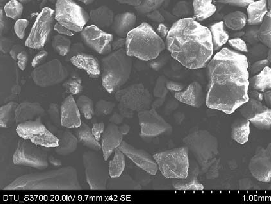
Fig. 14: Fine Sand at 1mm scale
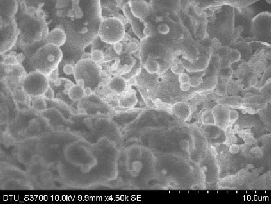
Fig. 15: Pond Ash at 10 μm scale
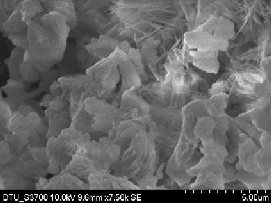
Fig. 16: Lime at 5 μm scale.
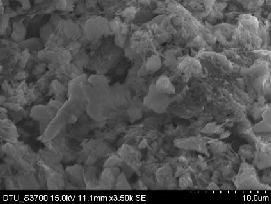
Fig. 17: Fine Sand+ 3% Lime at 10 μm scale
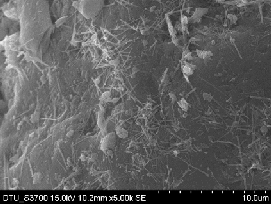
Fig. 18: Fine Sand+ 6% Lime at 10 μm scale
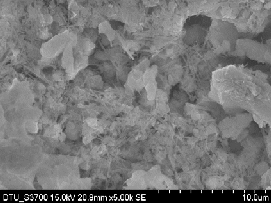
Fig. 19: Fine Sand+ 9% Lime at 10 μm scale
IJSER © 2013 http://www.ijser.org
International Journal of Scientific & Engineering Research, Volume 4, Issue 4, April‐2013 287
ISSN 2229‐5518
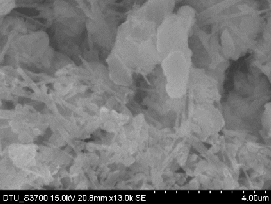
Fig. 20: Fine Sand+ 12% Lime at 4 μm scale
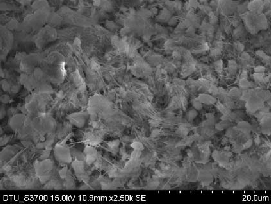
Fig. 21: Fine Sand+8% Pond Ash +9% Lime at 20 μm scale
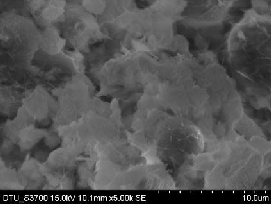
Fig. 22: Fine Sand+12% Pond Ash +9% Lime at 10 μm scale.
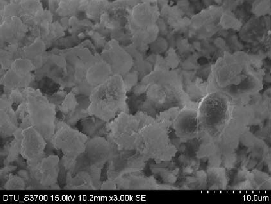
Fig.23: Fine Sand+16% Pond Ash +9% Lime at 10 μm scale
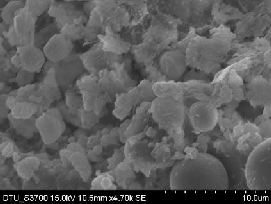
Fig. 24: Fine Sand+20% Pond Ash +9% Lime at 10 μm scale
IJSER © 2013 http://www.ijser.org
International Journal of Scientific & Engineering Research, Volume 4, Issue 4, April‐2013

ISSN 2229‐5518
288
Fig.25 XRD pattern of fine
and particles


Fig.26 XRD pattern of pond ash particles
Fig.27 XRD pattern of lime
IJSER © 2013 http://www.ijser.org



























